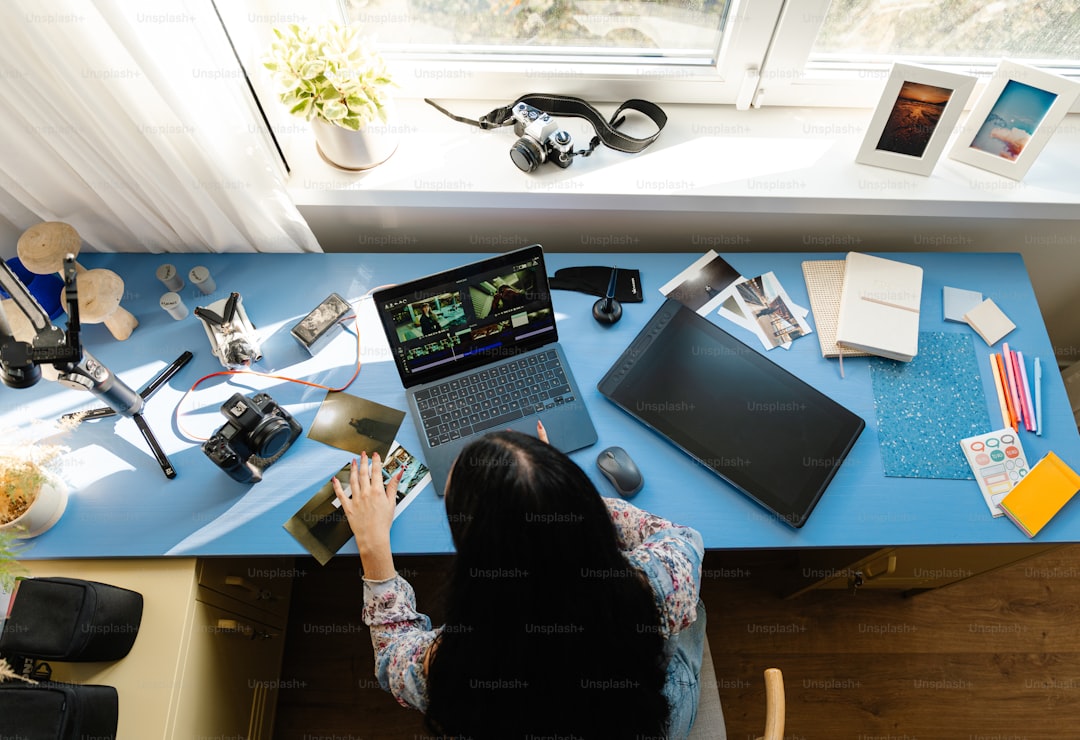Balanced Meals on the Fly Tips for Travelers on a Laptop

Introduction
The digital nomad lifestyle blends work, travel, and exploration in a way that few other career paths can match. While the freedom to set up a laptop on a balcony in Bali, a co‑working space in Berlin, or a café in Medellín is exhilarating, it also presents a constant challenge: how to keep nutrition balanced when you are always on the move.
Balanced meals are not just about avoiding hunger; they are the foundation of sustained energy, mental clarity, and long‑term health. When you are juggling deadlines, time‑zone changes, and new cultures, the last thing you want is a crash in blood sugar or a bout of digestive upset that forces you to miss a client call.
This guide offers practical, step‑by‑step tips for creating balanced meals on the fly, specifically tailored for travelers whose primary workstation is a laptop. It draws on nutrition science, the realities of life abroad, and the tools that modern nomads already use. By the end, you will have a repeatable system that lets you fuel your body as efficiently as you manage your inbox.
Understanding the Challenges
Variable Access to Kitchens
Unlike a traditional office setting, a digital nomad rarely has a permanent kitchen. You may find yourself in a shared hostel kitchen one week, a tiny studio apartment the next, and a coffee shop with only a microwave the following. Each environment comes with its own set of limitations: limited storage, unpredictable refrigeration, and a lack of cooking appliances.
Time Pressure
Work schedules often bleed into personal time. When a project deadline looms, you might be tempted to skip meals, rely on vending‑machine snacks, or order delivery at odd hours. This habit can quickly derail your nutritional balance.
Cultural and Language Barriers
Shopping for fresh produce or specialty items in a foreign market can be intimidating. Labels may be in a language you don’t read, and local dietary norms may differ from what you’re used to. Navigating these barriers without a plan can lead to suboptimal food choices.
Budget Constraints
Travel expenses fluctuate, and food can be a major line item. Eating healthy while staying within a modest budget requires strategic planning and smart sourcing.
Core Principles of Balanced Meals
Before diving into tactics, let’s establish the nutritional pillars that any balanced meal should include. Keeping these in mind will help you quickly assess whether a dish or snack meets your needs.
Protein
Protein supports muscle repair, satiety, and stable blood sugar. Sources that travel well include canned beans, lentils, jerky (choose low‑sodium options), smoked fish, tofu, and protein powders.
Complex Carbohydrates
Complex carbs provide sustained energy and are rich in fiber. Look for whole‑grain breads, brown rice, quinoa, oats, and starchy vegetables like sweet potatoes. When you are on the road, pre‑cooked or quick‑cook varieties are ideal.
Healthy Fats
Fats are essential for hormone production and brain health. Portable fats include nuts, seeds, nut butters, olives, avocado (if you can keep it cool), and small bottles of olive or coconut oil.
Micronutrients
Vitamins and minerals keep immune function strong and support recovery from travel stress. Fresh fruit, leafy greens, and a daily multivitamin can fill gaps when fresh produce is scarce.
Hydration
Staying hydrated is often overlooked. Water is the baseline, but electrolytes become crucial in hot climates or after intense physical activity. Carry a reusable bottle and consider electrolyte tablets.
Building a Portable Food Toolkit
A well‑stocked toolkit is the first line of defense against poor nutrition. Below is a list of items that fit easily into a backpack, suitcase, or laptop bag and require minimal space.
Dry Goods
- Rolled oats or instant oatmeal packets
- Brown rice or quinoa in resealable bags
- Whole‑grain crackers or crispbreads
- Dried fruit (no added sugar)
- Mixed nuts and seeds
Canned & Shelf‑Stable Proteins
- Chickpeas, black beans, or lentils (drain and rinse)
- Tuna, salmon, or sardines in water or olive oil
- Shelf‑stable tofu (vacuum‑packed)
Powdered Essentials
- Plant‑based protein powder (unflavored or mild flavor)
- Instant miso or broth powder for soups
- Nutritional yeast for a cheesy, B‑vitamin boost
Condiments & Flavor Boosters
- Small bottles of soy sauce, hot sauce, or mustard
- Olive oil spray or a tiny bottle of extra‑virgin olive oil
- Salt, pepper, and a pinch of dried herbs
Fresh Add‑Ons (when available)
- Pre‑washed salad mix in a resealable bag
- Cherry tomatoes, baby carrots, or snap peas
- One ripe avocado (store in the fridge if you have one)
Tools
- Collapsible silicone bowl or plate
- Lightweight bamboo or metal cutlery set
- Small cutting board (plastic)
- Portable electric kettle (if you have access to electricity)
- Reusable water bottle with built‑in filter (optional)
By keeping these staples on hand, you can assemble a balanced meal in minutes, regardless of where you are working.
Meal Prep Strategies for the Road
Unlike a home kitchen, you don’t have the luxury of batch‑cooking for a whole week. However, you can still use a “mini‑batch” approach to reduce daily decision fatigue.
The 2‑Day Cycle
Prepare a base component (e.g., cooked quinoa or brown rice) in a larger batch that will last two days. Pair it with fresh protein or canned beans each day. This way, you only need to cook the grain once, and you can vary the toppings to keep meals interesting.
Overnight Oats as a Breakfast Anchor
Combine rolled oats, plant‑based milk or water, a scoop of protein powder, and a handful of dried fruit in a mason jar. Let it sit in the fridge overnight. In the morning, you have a ready‑to‑eat, balanced breakfast that requires no cooking.
One‑Pot Soups
Use a portable electric kettle or a small stovetop to create soups in a single bowl. Start with a broth base (instant miso or bouillon), add a protein (canned salmon or tofu), toss in quick‑cooking grains (instant rice), and finish with frozen or fresh veggies. Heat, stir, and eat.
“Mix‑and‑Match” Salad Bowls
Keep a base of leafy greens or mixed salad mix, then add a rotating selection of proteins (canned beans, jerky, tofu), carbs (quinoa, cooked lentils), and fats (nuts, seeds, avocado). Dress with olive oil and vinegar or a pre‑made dressing.
Smart Grocery Shopping Anywhere
Finding nutritious food while traveling can be streamlined with a few universal tactics.
Locate the Nearest Supermarket
Use mapping apps to identify grocery stores near your accommodation. Large chains often have English labels and a wider selection of international products.
Shop the Perimeter First
The outer aisles of most stores contain fresh produce, dairy, and meats (or plant‑based equivalents). Even in smaller markets, prioritize these sections for micronutrient‑dense foods.
Choose Multi‑Purpose Items
Select foods that can serve multiple meals. For example, a bag of lentils can be used in salads, soups, and stir‑fries. A block of cheese (if you consume dairy) can top salads, melt over rice, or be a snack.
Embrace Frozen Produce
If fresh produce is limited, frozen fruits and vegetables are a great alternative. They retain most of their nutrients and last longer, which is perfect for a nomadic lifestyle.
Keep a Simple Shopping List
Maintain a digital list on your laptop or phone. Include staples like oats, beans, nuts, and any fresh items you need for the week. Checking items off reduces impulse purchases and keeps you on budget.
Cooking with Minimal Gear
Even with limited equipment, you can create nutritious meals that meet the balanced criteria.
The Power of the Electric Kettle
A kettle can do more than boil water. Use it to:
- Rehydrate instant rice or quinoa
- Cook oatmeal or couscous
- Soft‑boil eggs (if you have a small container)
Simply pour boiling water over the dry ingredient, cover, and let it sit for the recommended time.
One‑Pan Stovetop Techniques
If you have access to a single burner, consider the “sauté‑then‑steam” method:
- Heat a drizzle of oil in a pan.
- Add protein (tofu cubes, canned fish) and brown lightly.
- Toss in quick‑cook veggies (spinach, snap peas).
- Add pre‑cooked grain and a splash of broth.
- Stir until everything is heated through.
This creates a complete, balanced bowl in under ten minutes.
Microwave Hacks
Microwaves are common in hostels and co‑working spaces. Use them for:
- Steaming frozen vegetables (place in a bowl, cover with a wet paper towel)
- Cooking a single‑serve sweet potato (pierce, microwave 5‑7 minutes)
- Melting cheese for a quick quesadilla with a tortilla and canned beans
No‑Cook Options
When cooking is not possible, rely on assembly:
- Wraps using whole‑grain tortillas, hummus, pre‑cooked lentils, and fresh veggies.
- Protein‑rich smoothies blended with protein powder, frozen fruit, and a splash of water or plant milk.
- Snack plates featuring nuts, cheese, olives, and fruit.
Quick Recipes for Laptop Users
Below are five adaptable recipes that can be prepared with minimal tools and ingredients. Feel free to swap components based on what you have on hand.
Mediterranean Quinoa Bowl
Ingredients
- 1 cup cooked quinoa (prepared in advance)
- ½ cup canned chickpeas, rinsed
- Handful of cherry tomatoes, halved
- ¼ cup sliced olives
- 2 tbsp feta cheese, crumbled (optional)
- 1 tbsp olive oil
- 1 tsp lemon juice
- Pinch of dried oregano, salt, and pepper
Method
- In a bowl, combine quinoa and chickpeas.
- Add tomatoes, olives, and feta.
- Drizzle olive oil and lemon juice.
- Sprinkle oregano, salt, and pepper.
- Toss gently and enjoy.
Nutrition Highlights
Protein from chickpeas and feta, complex carbs from quinoa, healthy fats from olive oil, and plenty of micronutrients from tomatoes and olives.
Spicy Tuna Rice Wrap
Ingredients
- 1 can tuna in water, drained
- 1 tbsp low‑sodium soy sauce
- ½ tsp sriracha or hot sauce
- ½ cup cooked brown rice (leftover or instant)
- 1 whole‑grain tortilla
- Handful of shredded carrots
- ¼ avocado, sliced
Method
- Mix tuna, soy sauce, and sriracha in a small bowl.
- Lay the tortilla flat, spread rice down the center.
- Top with tuna mixture, carrots, and avocado.
- Roll tightly, slice in half, and eat.
Nutrition Highlights
Balanced protein, carbs, and healthy fats with a kick of flavor.
Coconut Curry Lentil Soup
Ingredients
- ½ cup red lentils, rinsed
- 1 cup water or vegetable broth (instant)
- 1 tbsp coconut milk powder (reconstituted)
- ½ tsp curry powder
- Pinch of salt
- Handful of frozen peas
Method
- In a microwave‑safe bowl, combine lentils, water/broth, and curry powder.
- Microwave on high for 4 minutes, stir, then microwave another 4 minutes until lentils are soft.
- Stir in coconut milk powder and peas.
- Microwave for 1 minute, stir, and serve.
Nutrition Highlights
Plant‑based protein and fiber from lentils, healthy fats from coconut, and a comforting flavor profile.
Overnight Chia Pudding
Ingredients
- 3 tbsp chia seeds
- 1 cup plant‑based milk (almond, oat, etc.)
- 1 tsp maple syrup or honey
- Handful of berries (fresh or frozen)
Method
- In a jar, whisk chia seeds, milk, and sweetener.
- Cover and refrigerate overnight (or at least 4 hours).
- Top with berries before eating.
Nutrition Highlights
Omega‑3s from chia, protein from plant milk, and antioxidants from berries.
Peanut Butter Banana Oatmeal
Ingredients
- ½ cup rolled oats
- 1 cup water or milk
- 1 banana, sliced
- 1 tbsp peanut butter
- Sprinkle of cinnamon
Method
- Combine oats and liquid in a microwave‑safe bowl.
- Microwave for 2 minutes, stir, then microwave another 1 minute.
- Stir in peanut butter and cinnamon.
- Top with banana slices.
Nutrition Highlights
Complex carbs, protein, and healthy fats for a power‑packed breakfast.
Managing Energy and Hydration
Even the best meals can fall short if you neglect timing and fluid balance.
Timing Meals Around Work
- Pre‑work snack: A small protein‑rich snack (nuts + fruit) 30 minutes before a deep‑focus session can prevent early‑afternoon crashes.
- Lunch: Aim for a balanced plate with protein, carbs, and vegetables to sustain energy through the afternoon.
- Afternoon boost: A half‑cup of Greek yogurt or a protein shake can revive concentration without causing a heavy feeling.
- Dinner: Keep it lighter if you need to wind down for sleep, focusing on vegetables and lean protein.
Hydration Hacks
- Carry a 1‑liter bottle and refill whenever you have a chance.
- Add a pinch of sea salt and a squeeze of lemon to water for a natural electrolyte boost.
- In hot climates, sip a small amount of coconut water or an electrolyte tablet solution every few hours.
Caffeine Strategy
Caffeine can be a valuable ally, but misuse leads to jitters and sleep disruption.
- Limit intake to one cup of coffee or tea before 2 p.m.
- Choose matcha or green tea for a steadier release of caffeine and added antioxidants.
Dealing with Dietary Restrictions
Digital nomads often face unfamiliar food environments that can challenge dietary needs.
Vegetarian / Vegan
- Prioritize legumes, tofu, tempeh, and plant‑based protein powders.
- Use fortified plant milks to cover vitamin B12 needs.
- Look for local markets selling beans, lentils, and whole grains in bulk.
Gluten‑Free
- Seek certified gluten‑free oats and rice.
- Many supermarkets carry gluten‑free pasta and bread alternatives.
- Use a separate cutting board and utensils if you share a kitchen to avoid cross‑contamination.
Low‑Sodium
- Rinse canned beans and fish thoroughly.
- Choose low‑sodium broth powders and sauces.
- Flavor meals with herbs, spices, lemon, and vinegar instead of salt.
Food Allergies
- Keep a translation card that lists your allergens in the local language.
- Choose simple meals with minimal ingredients to reduce risk.
- Carry an epinephrine auto‑injector if prescribed, and know the nearest medical facilities.
Leveraging Technology
Your laptop is already a hub for work; it can also be a powerful tool for nutrition management.
Meal Planning Apps
- Cronometer – tracks macro‑ and micronutrient intake with a database that includes international foods.
- MyFitnessPal – quick barcode scanning for packaged items and easy recipe logging.
Grocery List Sync
- Use cloud‑based note apps (Google Keep, Notion) to maintain a shared grocery list across devices.
- Add photos of product labels to help you identify items in foreign languages.
Budget Tracking
- Spreadsheet templates can log daily food expenses, allowing you to see trends and stay within budget.
- Categorize spending into “fresh produce,” “canned goods,” “snacks,” and “eating out” for clarity.
Language Assistance
- Google Translate’s camera function can read nutrition labels instantly.
- Install a local language dictionary app for food‑related terms.
Community Platforms
- Join nomad‑focused Facebook groups or Reddit communities where members share local grocery store tips, budget meals, and restaurant recommendations.
- Attend meet‑ups at co‑working spaces to exchange recipes and food‑sourcing ideas.
Creating a Routine
Consistency is the bridge between intention and habit. Establishing a simple routine around meals makes healthy eating feel automatic rather than a chore.
- Morning check‑in – Open your laptop, review the day’s schedule, and glance at your meal plan. Decide if you need a quick breakfast or can prep a lunch in advance.
- Prep block – Allocate 15‑20 minutes either the night before or early in the morning to assemble ingredients (e.g., portion out oats, wash salad greens, chop veggies).
- Scheduled eating windows – Set calendar reminders for snack and meal times. Treat these as non‑negotiable meetings.
- Post‑meal reflection – After each meal, note energy levels and satiety in a journal or app. Over time, patterns emerge that help you fine‑tune portion sizes and food choices.
- Weekly review – At the end of each week, review your grocery receipts, nutrition logs, and budget. Adjust the next week’s shopping list accordingly.
Common Pitfalls and How to Fix Them
Pitfall: Relying Too Much on Processed Snacks
Fix – Keep a stash of whole‑food snacks (nuts, dried fruit, roasted chickpeas) within arm’s reach of your laptop. When cravings hit, reach for these instead of chips or candy bars.
Pitfall: Skipping Meals Due to Time Zones
Fix – Pack portable, no‑cook options like overnight oats or protein bars that can be eaten at any hour. Adjust your meal timing gradually when crossing time zones to align with local daylight.
Pitfall: Over‑Portioning When Eating Out
Fix – Share a main dish with a fellow traveler or ask for a half‑portion. Pair the entrée with a side salad to increase vegetable intake without extra calories.
Pitfall: Forgetting Hydration
Fix – Set a recurring alarm every hour to take a sip. Keep your water bottle visible on your desk and refill it whenever you stand up.
Pitfall: Ignoring Micronutrient Gaps
Fix – Use a multivitamin that covers vitamin D, B‑12, and iron, especially if you follow a plant‑based diet. Add a serving of fruit or a small salad to each main meal for extra vitamins.
Final Thoughts
Balancing nutrition while living a laptop‑centric, travel‑heavy lifestyle is not a matter of perfection; it is a practice of preparation, awareness, and flexibility. By assembling a portable food toolkit, mastering quick‑prep techniques, and using technology to stay organized, you can nourish your body as efficiently as you manage your inbox.
Remember that every meal is an opportunity to fuel your mind, protect your health, and enhance the adventure of exploring the world. Treat your nutrition plan as a living document—one that evolves with each new city, each new co‑working space, and each new challenge you overcome.
When you master balanced meals on the fly, you free up mental bandwidth for creativity, productivity, and the pure joy of the digital nomad journey. Stay curious, stay prepared, and let your laptop be the bridge between work and well‑being wherever you set it down.
Random Posts

Unlocking the Secrets of Digital Entrepreneurship on the Go
Learn how to turn freedom into a competitive edge, master the mobile mindset, and launch a scalable digital business from anywhere, whether a beach café or a mountain cabin.
1 month ago

Secure Payment Platforms for the Location Independent
Discover the top secure payment platforms that let digital nomads, freelancers and online entrepreneurs receive money worldwide on a phone, swap currencies instantly and stay protected from fraud.
1 month ago

Staying Energized Abroad Simple Snacks for Remote Professionals
Discover quick, portable snacks that keep remote workers fueled on the move, balanced bites that steady blood sugar, boost focus, and fit easily into any nomadic workspace.
3 months ago

Tax Filing Hacks for Nomads Across Borders
Learn how digital nomads can master tax residency, use treaties, simplify foreign income reporting, and employ banking and crypto tools to stay tax efficient across borders.
1 week ago

Ultimate Guide to Remote Work Hotspots and Gadgets
Discover top remote-work hotspots worldwide and the essential gear that keeps you productive on the go. From beach cafés to mountain lodges, this guide helps you pick the perfect spot and tech for any adventure.
2 months ago
Latest Posts

Essential Software Every Remote Professional Should Use
Master remote work with essential tools: instant messaging like Slack, high definition video calls such as Zoom, and asynchronous voice apps. Streamline communication, stay connected and boost productivity.
1 day ago

Mastering Remote Work Productivity for Digital Nomads and Freelancers
Learn proven habits, tools, and tactics that help digital nomads and freelancers stay focused, deliver quality work, and maintain a sustainable lifestyle while traveling the world.
1 day ago

Tech‑Friendly European Towns Perfect for Remote Living
Discover Europe’s best small towns where fast internet, affordable living and vibrant tech communities let you work remotely while soaking up historic charm, lakeside views or mountain air.
1 day ago